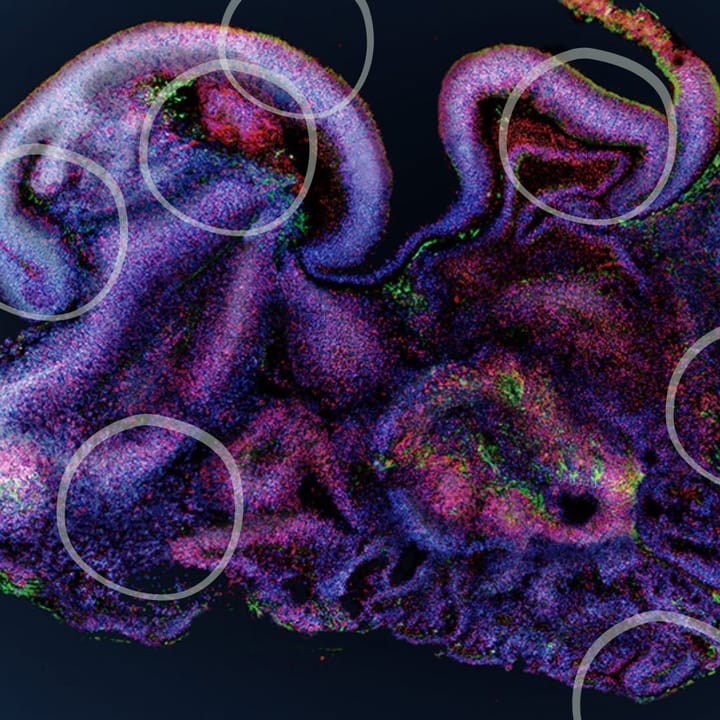Branding has been used to establish ownership over livestock for centuries, despite its numerous harmful side-effects. Animal activists insist that more humane methods can only be implemented with government support. By Joseph Olaniyan.
Strolling across a Gabas Ruga in Sokoto, Nigeria, my attention was caught by the sudden flinging of legs as a bull was wrestled to the ground. In vain, the creature flicked his tail in an attempt to ease off, only to end up with unpleasant yells that split the ear. Such is the agony of these animals, fighting hard in distress against the hot iron that presses a mark on him.
Studies have shown that animals exhibit both behavioural and physiological responses to pain during branding. Surprisingly, the strongest avoidance responses were observed when animals were freeze branded, a method which has long been considered the more humane alternative. This has not only prompted further research into the source of this unexpected additional pain, but also raised ethical concerns about the traditional view of animals as mere properties.
Why do we brand animals anyway? Animal branding is a livestock identification technique that dates back to ancient Babylon and the Code of Hammurabi, circa 1750 BCE. The method involves permanently marking animals, usually the skin, to classify different species, breeds and ownership. There are two common methods of animal branding which are:
Hot-iron branding, also known as fire branding, which involves pressing a red-hot iron to imprint texts on the animal's skin. This burns both the hair and skin to produce a deep, permanent scar. This severe process inflicts much pain, requiring about 8 weeks to heal during which further damage can creep in.
Hot iron branding is obviously painful for animals, but studies show it also causes damage to animal hides — about $20 million in annual losses. As an alternative, freeze branding was developed by Dr. Keith Farrell, an animal scientist at Washington State University in 1966. This has led to the prohibition of hot-iron branding in countries like Australia, the UK, Germany, and some US states which has bolstered the popularity of freeze branding. Even so, the European Union (EU) animal welfare regulations require that all brandings must be done under anaesthesia. Despite this technique being considered inhumane, a study revealed that 70.5% of farmers still practise hot iron branding in Brazil, the world’s largest exporter of beef. As the most cost-efficient method of permanent animal identification for farmers, it is difficult for them to abandon it completely. For those who prioritise animal welfare, what makes freeze branding the more attractive alternative?
Freeze branding uses tools that have been cooled to a very low temperature to apply a branding symbol or letter to an animal's skin. First, the animal’s hair is shaved to ensure the imprint is done directly on the exposed skin. After the branding iron is cooled to -196°C using dry ice (solid CO2) or liquid nitrogen, it is then pressed onto the animal's skin.
This permanent form of identification is widely recommended as a safer alternative and is often used on livestock such as cattle, horses, and sheep. So what’s the problem?
Similar to hot-branding, freeze burns inflicted during the process expose the animal to dangerous viruses like papilloma. These viruses are endemic to cattle, and can survive up to 12 months in natural infections. Though the immune system is usually strong enough to fight this, the skin trauma can cause infected cells to grow uncontrollably, resulting in tumours. This is exacerbated if the animal has a melanin deficiency, especially in arid climates, where they are more vulnerable to UV radiation. As a result, ‘cauliflower-like’ tumours specifically at the site of branding have been observed.
Obviously, the meat from these animals is no longer suitable for consumption. However, even if freeze-branded animals don’t develop cancer, the massive cortisol released during this stressful process can also affect their quality of life and meat. High concentrations of this stress hormone have shown to cause hypertension, fatigue and muscle strain which can affect their growth rate. This could result in long-term financial losses for farmers who continue to practise freeze-branding.
So what would be the ideal alternative to simultaneously ensure animal welfare and food safety?
Many organisations like the United States Department of Agriculture (USDA) have adopted an electronic form of tagging called Radio Frequency IDentification (RFID). This ID tag is clipped to the ears and can be used by farmers to identify and track animal movements, even from a distance. Considering the concerns associated with branding, governments are tightening livestock regulations, especially due to pressure from activists. RFID seems like a possible headway for proper livestock identification, welfare, and management. In fact, the UK government began to lay out the groundwork for electronic-ID approval in 2021 to encourage livestock farmers to use ear tags. Furthermore, the USDA is attempting to mandate RFID as the official animal identification method by the end of this year.
It is indisputable that animals need to be identified, especially in farming and ranching practices, but there is a need to shift towards more humane methods of identification. With a balance between efficiency, cost, and animal welfare, we can ensure a sustainable and responsible approach to animal identification. It is clear that to effectively implement less-invasive methods, concerns from farmers and ranchers about their cost, privacy, and effectiveness in rural areas be addressed.
References:
- Ruga: https://www.vanguardngr.com/2019/07/the-true-meaning-of-ruga/amp/
- Behavioural and physiological response: Godoi TLOS, Nascimento de Souza R, de Godoi FN, Queiroz de Almeida F, Alves de Medeiros M. Physiological and behavioral response of foals to hot iron or freeze branding. Journal of Veterinary Behavior. 2022 Feb;48:41–8. Available from: https://www.sciencedirect.com/science/article/pii/S1558787821001143
- Freeze-branded: https://en.wikipedia.org/wiki/Freeze_brand
- 8 weeks to heal: Tucker CB, Mintline EM, Banuelos J, Walker KA, Hoar B, Varga A, et al. Pain sensitivity and healing of hot-iron cattle brands. Journal of Animal Science [Internet]. 2014 Dec 1;92(12):5674–82. Available from: https://pubmed.ncbi.nlm.nih.gov/25403196/
- $20 million in annual losses: https://teamropingjournal.com/horse-care/freeze-brand-411-a-comprehensive-guide-to-freeze-branding-your-horse/
- Australia: https://www.ava.com.au/policy-advocacy/policies/identification-of-animals/branding-of-horses/
- The UK: https://weeatbalanced.com/food-and-farming/british-dairy-farming/#:~:text=Hot%20iron%20branding%20of%20cattle,the%20Animal%20Welfare%20Act%202006.
- Germany: https://www.horseillustrated.com/horse-news-2012-05-25-germany-hot-branding-ban
- A study: Müller BR, Souza Soriano V, De Oliveira Sans EC, Schnaider MA, Forte Maiolino Molento C. Perception of beef cattle producers in the state of Paraná regarding animal identification by hot iron branding. Revista Acadêmica Ciência Animal. 2018 Aug 28;16:1. Available from: https://pdfs.semanticscholar.org/828b/2e443262fd5c23ba6b01b2015e4d0a5a78d1.pdf
- The world’s largest exporter of beef: https://www.ers.usda.gov/amber-waves/2019/july/brazil-once-again-becomes-the-world-s-largest-beef-exporter/
- Resulting in tumours: Yeruham I, Perl S, Nyska A. Skin tumours in cattle and sheep after freeze-or heat-branding. Journal of Comparative Pathology. 1996 Jan;114(1):101–6. Accessible from: https://www.sciencedirect.com/science/article/abs/pii/S0021997596800
- UK government: https://www.gov.uk/government/publications/bovine-official-electronic-identification-eid-technical-standards/bovine-official-electronic-identification-eid-technical-standards
- USDA: https://www.aphis.usda.gov/aphis/newsroom/news/sa_by_date/sa-2021/rfid-traceability-rulemaking
- Cost, privacy, and effectiveness: McCathie L. The advantages and disadvantages of barcodes and radio frequency identification in supply chain management [Internet]. [University of Wollongong ]; 2004 [cited 25AD Oct]. Available from: https://ro.uow.edu.au/cgi/viewcontent.cgi?article=1009&context=thesesinfo





